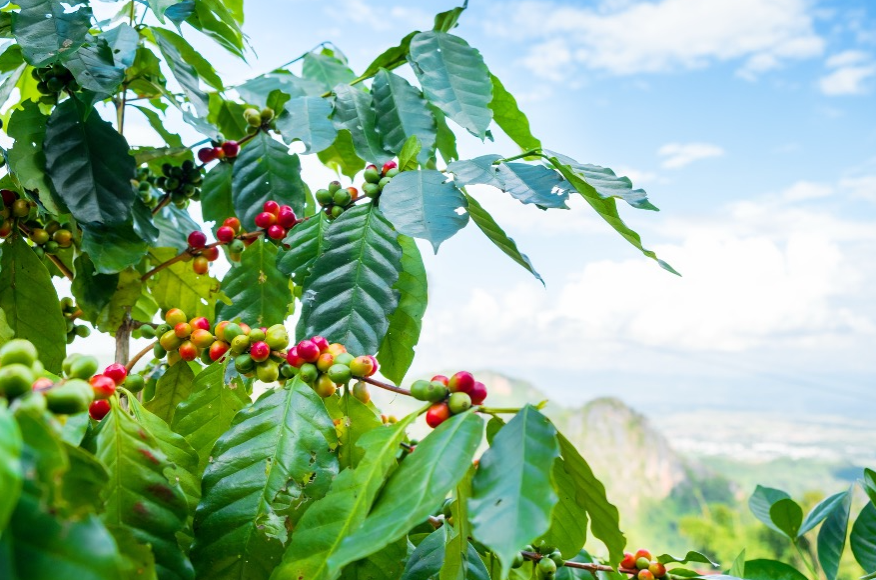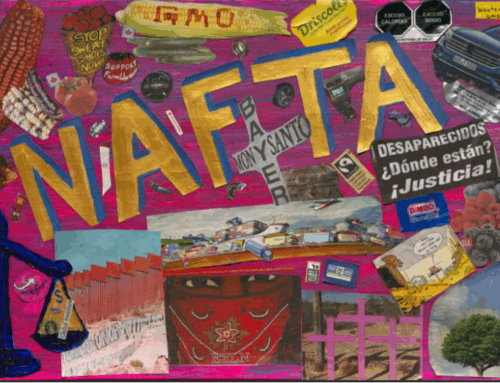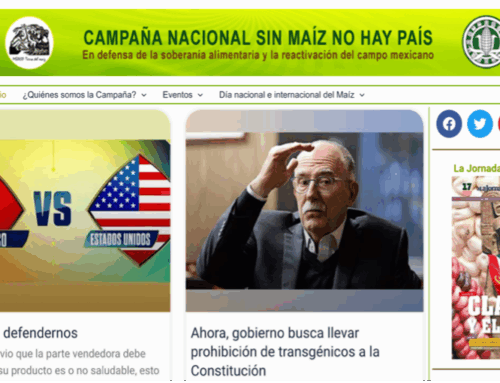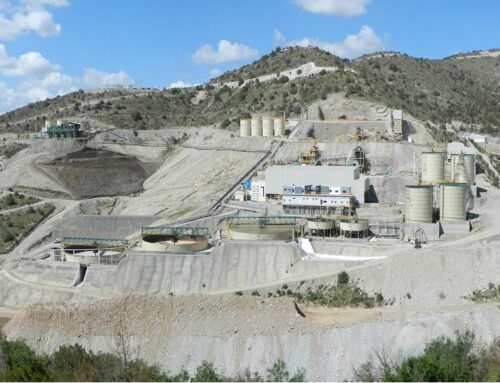
Figure 1. Coffee beans ripening on a tree. Photo credit: @jakkapan21 via Canva.com.
The thirtieth anniversary of the North American Free Trade Agreement (NAFTA) provides a timely opportunity to reflect on two contrasting yet interconnected economic paradigms: free trade and fair trade. While free trade prioritizes economic efficiency through the removal of tariffs and barriers to foster market-driven growth, fair trade seeks to counterbalance its inequities by promoting equity, social justice, and sustainability. Yet fair trade, both as an economic system and as a social movement, is fully integrated within—rather than separate from—the global markets facilitated by free trade. The infrastructure and supply chains established by free trade agreements such as NAFTA have created the conditions under which fair trade can function and expand, even as they also underscore the need for fair trade’s ethical interventions.
Although free trade has expanded market access and integration, it has also exacerbated inequalities, particularly among smallholders in the Global South. Conversely, the fair trade movement has sought to moderate global value chains, using commodity markets to alleviate poverty with varying degrees of success. The term fair trade refers to the broader social movement advocating for equitable trade practices, while Fairtrade specifically denotes the certification system managed by Fairtrade International that sets standards for ethical production and trade. The relationship between these systems is not a simple dichotomy; instead, they intersect in ways that complicate narratives of progress, economic empowerment, and justice. Nowhere is this interplay more evident than in Mexico’s agricultural sector, where the impacts of NAFTA and fair trade converge in profound and sometimes contradictory ways.
While free trade and fair trade are often cast as opposing paradigms, their interplay reveals a complex relationship in which overlapping mechanisms shape global agricultural systems. Navigating the tensions between these paradigms requires fostering spaces where innovative policies and approaches can emerge, prioritizing long-term economic viability, equity, and resilience to ensure that economic progress supports the well-being of all stakeholders. In the face of environmental uncertainties and geopolitical tensions, cultivating these intersections is essential for safeguarding the livelihoods of smallholder farmers and promoting the sustainability of global agricultural systems.
From Fair Trade Roots to Free Trade Realities: Navigating the Shifts in Agricultural Economies
Although the history of fair trade reaches back to the post-World War II era, its contemporary form took shape in 1988 with the establishment of the Dutch organization Max Havellar, which created the first fair trade certification standards for agricultural commodities such as coffee. The effort to incorporate marginalized agricultural producers into global value chains on more equitable terms was further institutionalized in 1997 with the creation of the Fairtrade Labelling Organizations International, established to coordinate fair trade standards globally. This infrastructure expanded fair trade-certified markets, making it easier for consumers to identify and purchase ethically produced products.
NAFTA’s implementation in 1994 marked a new era of trade liberalization in North America. By eliminating tariffs and regulatory barriers, the agreement aimed to foster economic growth and regional integration. Yet these policies disproportionately benefited industrialized agriculture while intensifying challenges for smallholder farmers. For example, subsidized U.S. corn flooded Mexican markets, displacing local maize producers and destabilizing rural economies. This influx of cheap imports forced many smallholders to abandon traditional crops, often increasing precarious employment alongside migration to the United States and regional urban centers.
Export-oriented agriculture became a cornerstone of Mexico’s trade strategy under NAFTA, with a focus on high-value crops such as coffee. While this shift generated foreign exchange earnings, it reinforced structural inequities within global value chains. Large transnational corporate agribusinesses—headquartered in the United States, Europe, and, to a lesser extent—Mexico captured the lion’s share of the value generated, leaving smallholders to shoulder the risks of production. These dynamics exacerbated poverty and vulnerability in rural communities.
The dismantling of state support structures, such as the Mexican Coffee Institute (INMECAFE)—established in 1973 to provide technical assistance to coffee farmers and implement export quotas—further compounded these challenges. INMECAFE was officially dissolved in 1989, just a few years before NAFTA came into effect in 1994. Its disollution was part of a broader policy shift in Mexico that rolled back state subsidies and agricultural support mechanisms, reinforced by structural adjustment programs that were promoted by international financial institutions. This shift aligned with Mexico’s efforts to prioritize market-driven growth and liberalize its economy in preparation for deeper integration into global markets, including NAFTA.
The loss of INMECAFE resulted in price and income instability alongside declining yields and coffee quality, as farmers were deprived of extension services and financial support for agricultural inputs and coffee renovation. Mexican coffee smallholders were left increasingly exposed to the volatility of global markets. The simultaneous collapse of the International Coffee Agreement in 1989 created a regulatory vacuum, fostered conditions in which predatory intermediaries, such as local coffee-buying coyotes, and extreme market fluctuations further undermined producer incomes and community stability.
Fair Trade as a Counterbalance to Free Trade’s Inequities
Amid these disruptions, the fair trade movement emerged as a potential counterbalance to the inequities of free trade. Rooted in principles of equity and sustainability, fair trade sought to address the marginalization of smallholders by providing minimum prices, social premiums, and long-term contracts. Where successfully implemented, these mechanisms offered a degree of stability in the face of market volatility, enabling smallholders to reinvest in their farms and communities.
Although coffee producers in southern Mexico were unevenly incorporated into fair trade markets, certification became a lifeline for many. Some cooperatives successfully used fair trade premiums to fund infrastructure projects, educational programs, and health initiatives. These investments not only improved living conditions but also strengthened the social fabric of producer communities. Moreover, fair trade’s emphasis on collective decision-making fostered a sense of agency among smallholders, supporting self-governance and their ability to negotiate better terms within the value chain.
A critical difference between free trade and fair trade is how the latter aims for democratic governance and responds to a diverse range of voices, including smallholders, retailers, academics, certifiers, activists, and governmental and non-governmental representatives. In recent years, for example, Fairtrade International has developed defined Standards for small-scale producer organizations, drawing on core ILO conventions as the principle reference for good working conditions.
Fair trade-certified smallholder farmers often rely on short-term contract workers during peak labor periods such as the coffee harvest. Many of these employees—frequently women or migrants—have historically been excluded from the benefits of certification, receive low wages and lacking job security. This oversight exposes a significant gap in fair trade’s ethical framework and underscores the need for more inclusive approaches to labor rights. The new standards seek to address these concerns by requiring smallholders to provide their workers, whether permanent or temporary, with training on workers’ rights as well as gradual salary increases. Fairtrade remains the only certification system to mandate annual wage increases to help close the gap between prevailing wages and living-income targets.
Despite its challenges, the fair trade movement continues to evolve as a critical framework for equity, sustainability, and inclusivity. It offers an important counterbalance to the inequities of free trade while highlighting the ongoing need for improvements in labor rights and economic justice.
Challenges to the Fair Trade Model
Despite their contrasting philosophies, free trade and fair trade have become deeply intertwined. The globalization of supply chains—driven by free trade agreements like NAFTA—has facilitated the expansion of fair trade markets. Yet this integration has raised concerns about “ethical dilution.” As multinational corporations adopt fairtrade certifications, critics contend that they often do so more to enhance brand image than to meaningfully improve conditions for workers and producers.
While fair trade has enabled smallholders to access premium markets, it has simultaneously exposed them to the pressures of the globalized economy. Smallholder organizations face challenges such as fluctuating demand, certification compliance costs, and competition from large-scale producers. Certification requirements, moreover, are often labor-intensive and costly, placing additional burdens on already resource-constrained producers. These dynamics illustrate the limitations of fair trade as a stand-alone solution to the inequities of free trade.
Examining free trade and fair trade through the lens of gender equity illuminates key tensions as well as points of convergence between these two economic paradigms. Research shows that the impact of free trade policies on women’s economic opportunities and daily lives in Mexico has often been contradictory. NAFTA, for instance, spurred the expansion of export-oriented industries that employed many women, offering pathways to economic independence, financial autonomy, and greater household decision-making power. Yet these opportunities were typically constrained by low wages, poor working conditions, gender-based violence and discrimination. Rural women in agricultural communities, in particular, derived little benefit from export-oriented free trade policies, as they and their families struggled to compete in global markets.
By contrast, in some contexts, participation in fair trade markets has contributed to greater gender equity within producer communities. Our research in Oaxaca reveals how women have leveraged fair trade certification programs to gain both economic independence and leadership roles. For example, initiatives such as fair trade coffee micro-batching programs have enabled women farmers to market specialty coffees at premium prices, increasing their incomes and visibility within the value chain.
These gains, however, often come at a cost. Women, who play central roles in both agricultural production and household management, frequently shoulder the increased labor demands of certification compliance and organizational governance. This “hidden labor” underscores the unequal distribution of benefits within fair trade agricultural systems, complicating narratives of empowerment and progress. Moreover, systemic barriers—such as limited access to land and credit—continue to constrain their full participation. These complexities highlight the need for a more nuanced, intersectional approach to trade policy, one that confronts the structural inequalities perpetuated by free trade while addressing the limits of fair trade certification to foster equitable opportunities for all stakeholders.
Fair Trade’s Futures
The future of both free trade and fair trade is fraught with uncertainty. Climate change poses existential threats to crops such as coffee, which require specific environmental conditions to flourish. Rising temperatures, erratic rainfall, and growing prevalence of diseases such as coffee rust—a fungal infection that causes defoliation, reduced yields, and severe economic losses—have made cultivation increasingly precarious for smallholders. At the same time, climate change is reshaping agricultural landscapes more broadly, reducing the availability of arable land and exacerbating resource scarcity. The sustainability of global agricultural commodities such as coffee is therefore increasingly in doubt.
Fair trade’s emphasis on sustainable farming practices offers one response to these environmental challenges. Certification promotes adaptive strategies such as diversified cropping and organic methods, yet the financial and labor investments required to implement them are often beyond the reach of many producers. This raises questions about the scalability and long-term viability of fair trade market participation as a climate adaptation strategy. Meanwhile, the infrastructure established by free trade agreements such as NAFTA is designed to facilitate large-scale trade and financial flows, prioritizing transnational corporations (TNCs) over smallholders. Subsidies and other state resources are disproportionately allocated to TNCs, creating systemic barriers that hinder fair trade’s expansion. To navigate these challenges, both paradigms must evolve. Free trade systems would need to incorporate mechanisms that account for environmental and social costs, ensuring that their benefits are more equitably distributed—a possible that remains highly contested. Meanwhile, fair trade must expand its reach and inclusivity while addressing persistent critiques of scalability and accessibility. Collaborative efforts among governments, certifiers, and consumer advocacy groups will be essential to building trade systems that are resilient, equitable, and sustainable.
Geopolitical shifts add further uncertainty. The resurgence of protectionist policies under leaders like President Trump has disrupted established trade agreements, creating new barriers for smallholder farmers. As NAFTA reaches its thirtieth anniversary, its legacy highlights the competing lessons of free trade and fair trade. Free trade offers infrastructure for economic growth, while fair trade points toward a vision of ethical and sustainable development. Bridging the divide between these paradigms requires reimagining trade systems that prioritize long-term economic viability, equity, and resilience—ensuring that economic progress does not come at the expense of human and environmental well-being. In an era marked by climate uncertainty and political instability, striking this balance is critical for safeguarding the livelihoods of the world’s 1.9 million fair trade certified farmers, expanding existing fair trade markets to more of the world’s 600 million smallholder farmers, and ensuring the sustainability of global agricultural systems.
Sarah Lyon is an anthropologist whose research examines how culture and political economy shape the ways smallholder farmers, consumers, and industry stakeholders engage in global value chains, particularly within the coffee and fair trade sectors. She is the author of Coffee and Community: Maya Farmers and Fair Trade Markets and the co-editor of Fair Trade and Social Justice: Global Ethnographies.
Cite as: Lyon, Sarah. 2025. “Between Fair Trade and Free Trade”. In “Anthropology of Free Trade”, edited by Alejandra González Jiménez, American Ethnologist website, 11 November. [https://americanethnologist.org/online-content/between-fair-trade-and-free-trade-by-sarah-lyon/]




